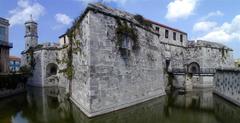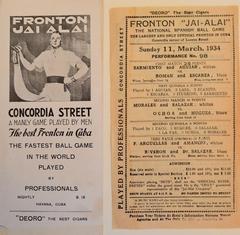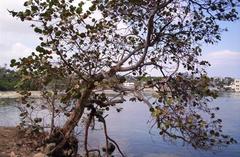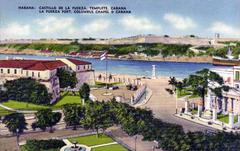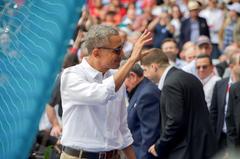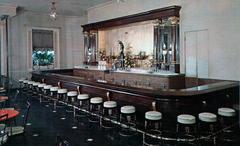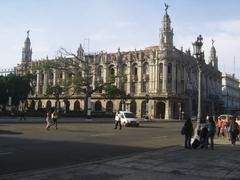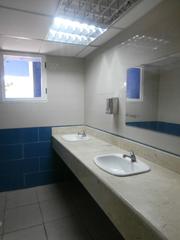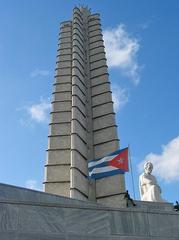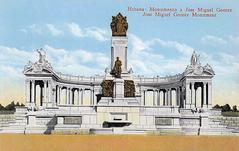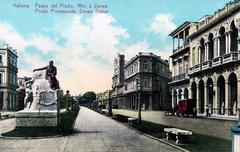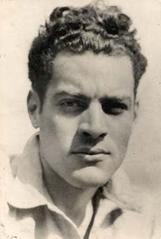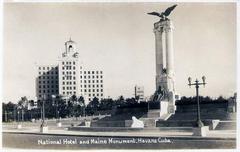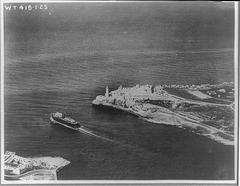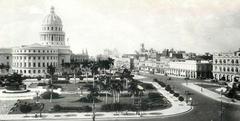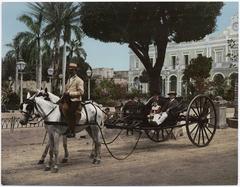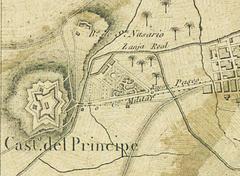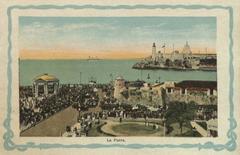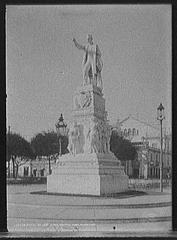
Visiting the José Martí Anti-Imperialist Platform: Havana, Cuba — History, Significance, and Visitor’s Guide
Date: 04/07/2025
Introduction
The José Martí Anti-Imperialist Platform is a landmark public plaza in Havana, Cuba, renowned for its profound political symbolism and its role as a center for civic gatherings. Established in 2000 during a period of heightened tension between Cuba and the United States, the platform stands as a testament to the island’s enduring spirit of resistance and national pride. Named after José Martí, Cuba’s revered independence hero and intellectual, the site continues to serve as a venue for political rallies, cultural events, and public demonstrations, while offering visitors a unique window into the nation’s complex history and vibrant contemporary life (Translating Cuba; Wikipedia; The Left Chapter).
Table of Contents
- Introduction
- Origins and Historical Context
- Architectural Features and Symbolism
- Political Significance in Cuban Society
- Visitor Information
- Major Events and Activities
- Nearby Attractions
- Practical Travel Tips
- Frequently Asked Questions (FAQ)
- Conclusion and Recommendations
- Sources
Origins and Historical Context
The José Martí Anti-Imperialist Platform was inaugurated in April 2000, directly opposite the U.S. Embassy on Havana’s iconic Malecón seawall. Its rapid construction, completed in just 80 days by a workforce of nearly 2,000, was catalyzed by the Elián González affair—a diplomatic crisis that heightened U.S.-Cuba tensions (Translating Cuba). Since then, the plaza has hosted major political demonstrations, national celebrations, and solidarity events, cementing its role as a symbolic “battleground” for Cuban sovereignty.
Architectural Features and Symbolism
- Layout and Design: The platform is a vast open-air plaza with a central stage and an amphitheater-like configuration, capable of accommodating tens of thousands of people for rallies and events.
- The Wall/Mount of Flags: One of its most striking features is the “Mount of Flags”—138 flagpoles (originally flying black flags with white stars), erected in 2006 to memorialize Cubans killed by terrorism and to visually shield the U.S. Embassy’s electronic news ticker from the Cuban public (Translating Cuba).
- Statue of José Martí: The central monument features José Martí cradling a child—a powerful image of protection and guidance.
- Patriotic Color Scheme: The plaza is paved in the colors of the Cuban flag, reinforcing its role as a stage for national expression.
- Proximity to Malecón: The site’s location on Havana’s most famous promenade ensures it remains a visible and accessible part of the city’s social and political life (The Cuban History).
Political Significance in Cuban Society
- Venue for Political Expression: The platform has been the scene of historic rallies, including the mass mobilization demanding the return of Elián González and recurring demonstrations against the U.S. embargo (Wikipedia; The Left Chapter).
- Symbol of Anti-Imperialism: The site visually and ideologically represents Cuban resistance to foreign intervention, with Martí’s legacy central to its mission (ALBA-TCP).
- Contemporary Relevance: Despite environmental wear and periodic restoration, the platform continues to host significant cultural and political events. In 2023, over half a million Cubans rallied here to protest U.S. policies (The Left Chapter).
Visitor Information
Visiting Hours and Admission
- Hours: The platform is generally open to the public daily from 8:00 AM to 6:00 PM, though hours may vary for special events.
- Admission: Entry is free; no tickets are required for general visits. Large events may have security checks or restricted access.
Accessibility
- Physical Access: The plaza features ramps and wide, flat walkways, making it accessible to wheelchair users, though some surfaces may be uneven due to exposure to the elements.
- Amenities: There are no permanent restrooms or food vendors on-site; amenities are available in the surrounding Vedado district.
Getting There
- Location: Malecón & Calle K, Vedado, Havana—directly opposite the U.S. Embassy.
- Transport: Easily reached by taxi, public bus (from Coppelia to Linea y K), or on foot from central Havana. Walking along the Malecón offers scenic views (Rome2Rio).
Facilities and Amenities
- On-Site: Open plaza with minimal shaded areas and limited seating. Raised stage for events.
- Nearby: Numerous cafes, restaurants, and public facilities in Vedado and along the Malecón.
Major Events and Activities
- Political Rallies: Regular site for mass demonstrations and official state events, especially on key revolutionary dates (Peoples Dispatch).
- Cultural Events: Venue for free public concerts, festivals, and national celebrations—attracting local and international artists (SuperTravelr).
- Photography: The dramatic flags, ocean backdrop, and proximity to the U.S. Embassy make for compelling photos, especially at sunrise or sunset.
- Controversies: In 2025, a brief attempt to rent the platform for private events (at up to 28,000 CUP/day) sparked public backlash, reaffirming its status as a primarily political and cultural venue (CiberCuba; CubaHeadlines).
Nearby Attractions
- Malecón: Havana’s iconic seawall, perfect for walks with sea views and people-watching.
- Hotel Nacional de Cuba: A historic hotel with gardens and a panoramic view, minutes away.
- Plaza de la Revolución: Site of the monumental José Martí Memorial and government buildings (PlanetWare).
- Old Havana (Habana Vieja): UNESCO World Heritage Site full of colonial architecture and vibrant plazas.
- Vedado District: Known for eclectic architecture, nightlife, and cultural venues.
Practical Travel Tips
- Sun Protection: The plaza is mostly unshaded—bring sunscreen, a hat, and sunglasses.
- Hydration: Carry water, especially during hot months (May–September).
- Footwear: Wear comfortable shoes for walking on paved and exposed surfaces.
- Event Schedules: Check local listings or ask at your accommodation for any scheduled events or access restrictions.
- Photography: Permitted, but avoid photographing security personnel or sensitive embassy areas.
- Language: Spanish is spoken; basic phrases or a translation app will help.
Frequently Asked Questions (FAQ)
Q: Is the José Martí Anti-Imperialist Platform free to visit?
A: Yes, the plaza is a public space with free admission.
Q: What are the standard visiting hours?
A: Typically open from 8:00 AM to 6:00 PM. Hours may change for major events.
Q: Is the site accessible for those with disabilities?
A: Yes, with ramps and flat surfaces, though some areas may be uneven.
Q: Can visitors attend events?
A: Yes, public rallies and concerts are often open to all, but check schedules for access details.
Q: Are there guided tours available?
A: Many city tours include the platform; inquire with local operators for details.
Q: Can the plaza be rented for private events?
A: Venue rental was briefly allowed in 2025 but is now strictly controlled to preserve its civic function.
Conclusion and Recommendations
The José Martí Anti-Imperialist Platform remains a dynamic emblem of Cuba’s revolutionary heritage and commitment to sovereignty. Its unique combination of political significance, architectural symbolism, and central location makes it a must-visit for anyone seeking to understand Cuba’s past and present. Whether attending a rally, enjoying the striking Wall of Flags, or exploring nearby landmarks, the platform offers a profound and authentic Havana experience. For the latest updates on events, accessibility, and guided tours, consult local tourism offices or resources like the Audiala app.
Sources
- Translating Cuba
- Translating Cuba
- Locally Sourced Cuba
- The Left Chapter
- Wikipedia
- The Cuban History
- ALBA-TCP
- Mexico Historico
- Tallypack
- CiberCuba
- CubaHeadlines
- SuperTravelr
- Peoples Dispatch
- PlanetWare
- Rome2Rio


